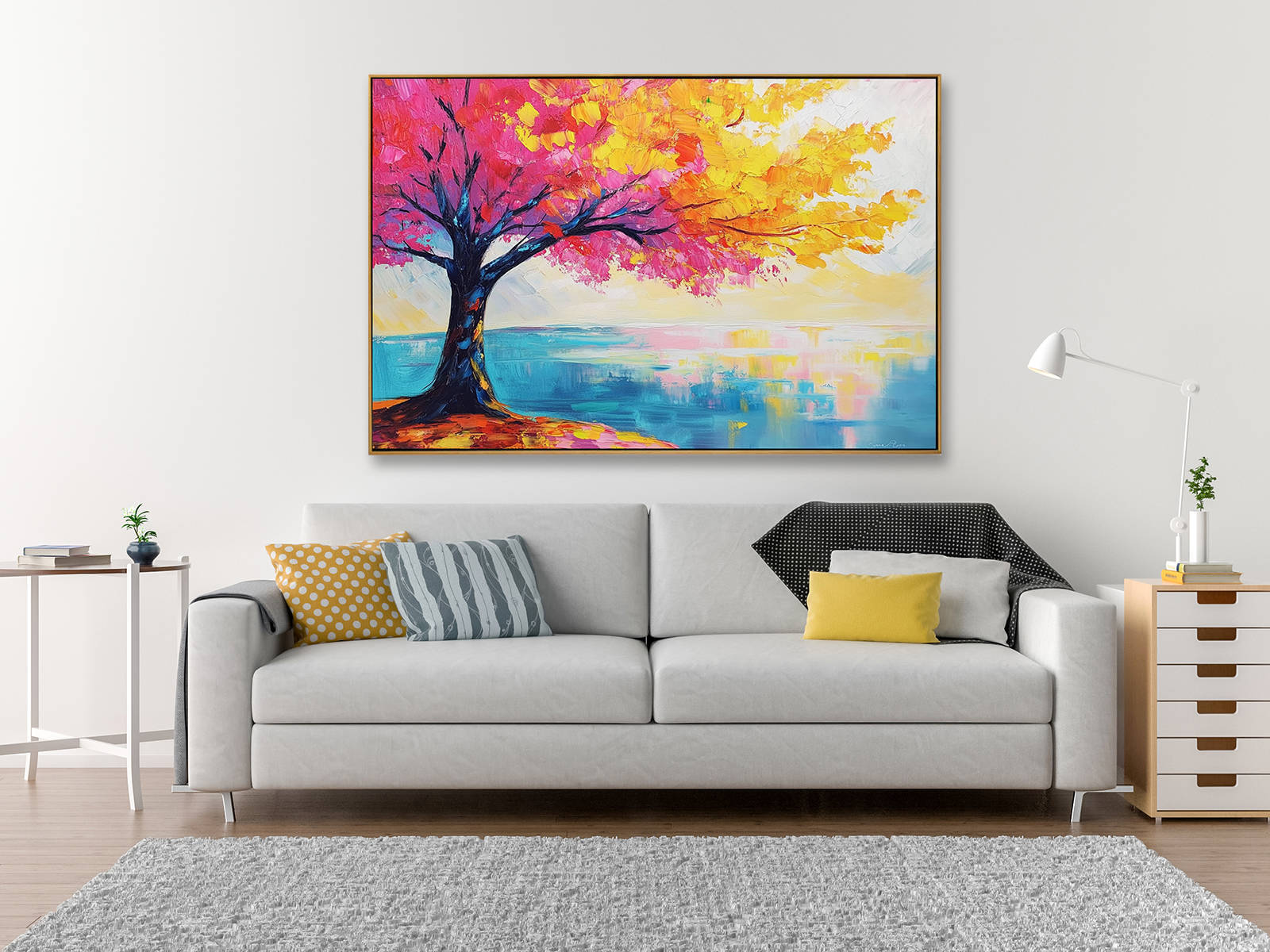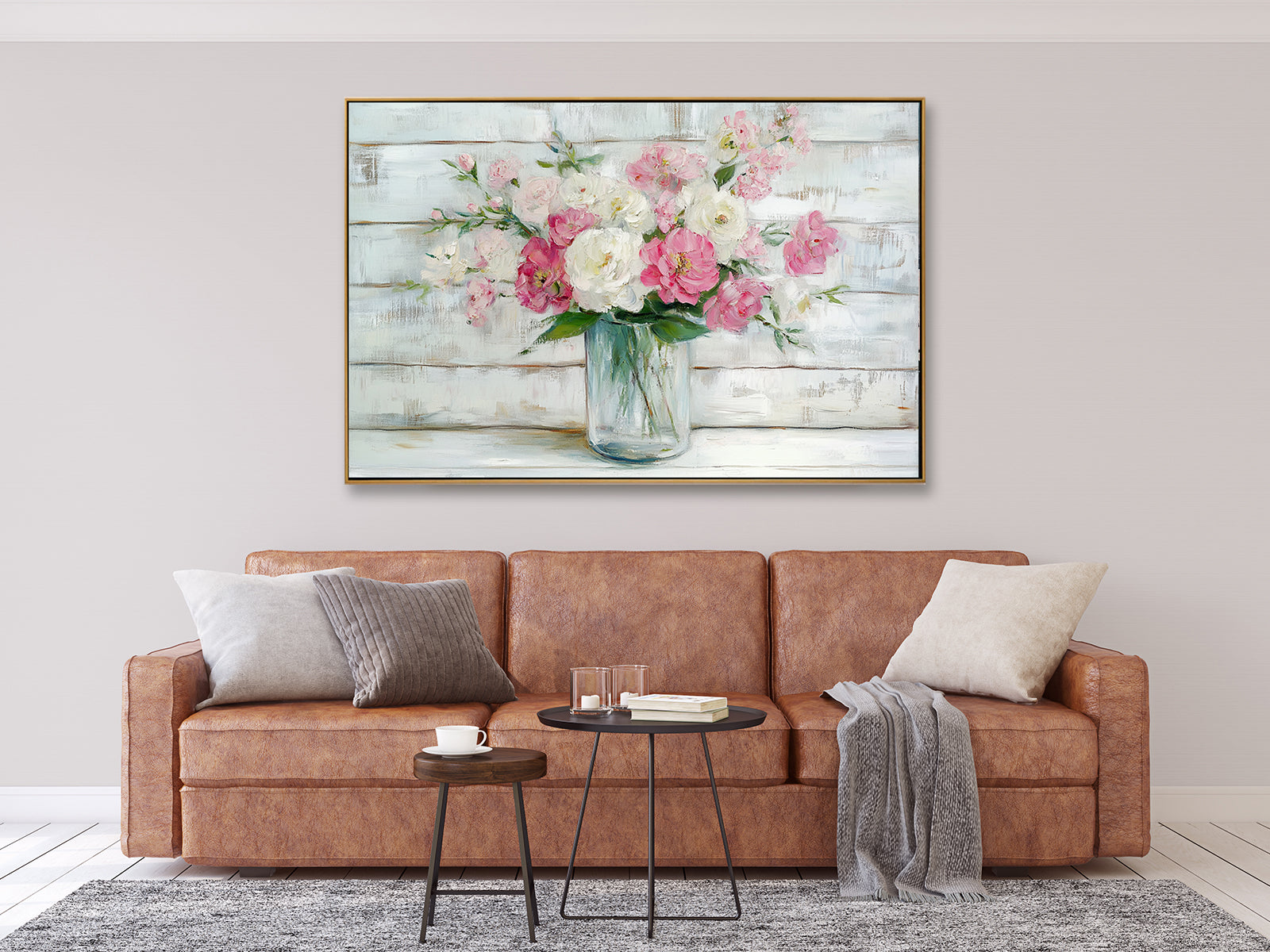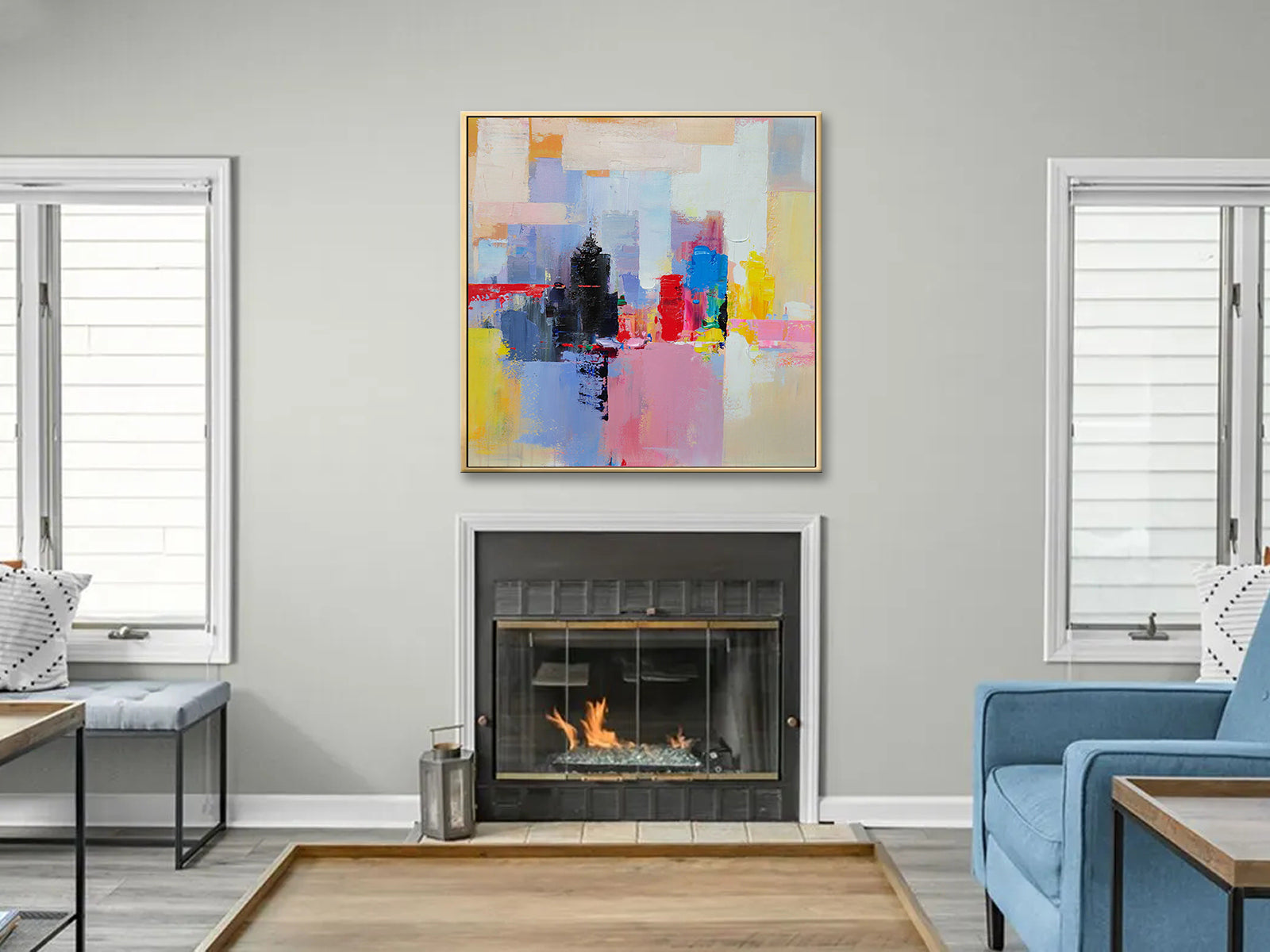
Why A Hand Painted Painting? From Brush Strokes to Memories: The Story Behind Every Unique Piece
Walk into a home decorated with art, and you’ll likely notice a subtle but powerful difference between a mass-produced print and a hand painted painting. One feels like a copy of a moment; the other is a moment—frozen in pigment, shaped by a human hand, and steeped in stories. In an era of instant downloads and factory-made decor, why do hand painted pieces still hold such magic? Let’s dive into the world of brush strokes, emotion, and memory to uncover the truth behind their uniqueness.
1. Brush Strokes: The "Fingerprint" of a Hand-Painted Piece
The first thing you’ll notice when you stand close to a hand painted canvas painting is its texture. Unlike the flat, uniform surface of a print, every stroke of the brush carries intention. A thick daub of blue might represent a stormy sea, applied with urgency to convey turbulence; a delicate sweep of pink could be a sunset, blended slowly to mimic the soft fade of light. These strokes aren’t random—they’re the artist’s response to the world around them.
Consider this: When an artist paints a landscape, they don’t just replicate colors. They adjust their brush pressure based on how the wind feels that day, or layer pigments to match the way sunlight filters through leaves. A print, by contrast, uses digital algorithms to copy an image—no variation, no spontaneity, no "human touch."
To visualize this difference, let’s look at a comparison of key textural and intentional elements:
|
Feature |
Hand Painted Canvas Painting |
Mass-Produced Print |
|
Surface Texture |
Thick, uneven, and tactile (visible brushstrokes) |
Flat, smooth, and uniform (no physical texture) |
|
Color Variation |
Subtle shifts in hue (layered pigments) |
Static, one-dimensional color (no depth) |
|
Intentionality |
Strokes reflect mood, light, and artist’s perspective |
Uniform pixels (no personal or emotional input) |
2. Emotion: When Art Becomes a Conversation
A hand painted painting doesn’t just look like something—it feels like something. Imagine a portrait of a loved one: the artist might have lingered on the curve of their smile, adding extra warmth to the cheeks, or softened the eyes to capture their gentleness. These small, intentional choices turn the painting into a conversation starter—a way to share memories every time you glance at it.
Mass-produced prints, on the other hand, are designed to be "neutral." They’re created to appeal to as many people as possible, which means they lack the quirks and imperfections that make art personal. A print of a sunset might be beautiful, but it can’t tell you about the evening the artist painted it—how the sky turned a rare shade of orange, or how a breeze ruffled their canvas mid-stroke.
This emotional gap is clear when we compare the "storytelling power" of each medium:
|
Aspect of Storytelling |
Hand Painted Painting |
Mass-Produced Print |
|
Personal Narrative |
Tied to the artist’s experience (e.g., a memory, a feeling) |
No unique narrative (copied from a stock image) |
|
Emotional Resonance |
Evokes specific feelings (nostalgia, joy, calm) |
Generic appeal (no deep emotional connection) |
|
Imperfections |
"Flaws" (e.g., uneven brushstrokes) add character |
Perfectly uniform (no character or individuality) |
3. Memories: Hand Painted Art as a Timeless Keepsake
One of the most powerful reasons to choose a hand painted painting is its ability to preserve memories. Think about a custom landscape of your childhood home: the artist can include details no print ever could—the old oak tree in the yard, the chipped paint on the front porch, even the way the light hits the windows at 4 p.m. Every time you look at that painting, you’re transported back to that place and time.
Hand painted pieces also age with grace. Over the years, oil paints develop a soft patina, and the canvas may gently warp—small changes that add to its charm. A print, by contrast, fades over time, especially if exposed to sunlight. It’s a temporary decoration, not a legacy.
Consider this example: A couple commissions a hand painted portrait of their wedding day. The artist captures the bride’s veil fluttering in the wind, the groom’s laugh lines, and the exact shade of the flowers in her bouquet. Years later, their children and grandchildren will look at that painting and see more than a picture—they’ll see a moment that shaped their family’s story. A print of a generic wedding scene could never hold that weight.
Why It Matters: Choosing Art That Matters
In a world where we can buy almost anything with a click, hand painted art is a rebellion against sameness. It’s a choice to surround yourself with something that has meaning—to own a piece that isn’t just decor, but a piece of someone’s heart and history.
A hand painted abstract painting isn’t perfect. It might have a brushstroke that’s a little too thick, or a color that’s slightly off. But those "flaws" are what make it unique. They’re proof that a human being took the time to create something just for you—or for the world—with intention, emotion, and care.
So the next time you’re looking for art to fill your space, ask yourself: Do I want something that’s just a copy? Or do I want something that tells a story—one that will grow with you, remind you of what matters, and become a memory in itself?
The answer, for anyone who’s ever felt the magic of a hand painted piece, is clear.






